|
|
27/7/1970
Pada hari ini dalam tahun 1970, banci perumahan dan penduduk telah diadakan bagi seluruh Malaysia.Banci penduduk bagi Malaysia pertama kalinya diadakan pada tahun 1957 dan di Malaysia Timur pada tahun 1960. Kerajaan telah membelanjakan sebanyak $13 ½ juta ringgit bagi tujuan tersebut, dan ia merupakan tanggungjawab Jabatan Perangkaan. Banci penduduk merupakan proses keseluruhan mengumpul, menyusun, menilai, menganalisa, menerbitkan data-data mengikut kedudukan demografi, ekonomi dan sosial dari tiap-tiap seorang pada masa serentak. Banci penduduk adalah lebih menyeluruh tanpa sebarang pengkhususan. Butir-butir seperti pengangguran, pelajaran, bilangan keluarga, penghijrahan dari desa ke kota merupakan perkara penting yang diberikan perhatian. Banci perumahan tidak dijalankan serentak dan soalan-soalan yang dikemukakan adalah lebih khusus tentang kedudukan keluarga dengan lebih terperinci. Soalan-soalan ditumpukan kepada kelayakan, pekerjaan serta maklumat-maklumat yang berkaitan dengan rumah termasuklah jenis dan bentuknya.Soalan-soalan juga ditumpukan mengenai kemudahan-kemudahan asas seperti bekalan air dan elektrik.Banci ini adalah penting kepada kerajaan dan seluruh rakyat.Iabukan sahaja bertujuan untuk mengetahui dan mendapatkan gambaran lengkap bilangan penduduk tapi juga untuk mengumpul butir-butir lengkap tentang penduduk. Dengan berjalannya banci secara serentak bagi seluruh Malaysia pada hari ini dalam tahun 1970, dapatlah kerajaan merancang pembangunan negara dengan lebih teratur demi kepentingan rakyat.
Sumber : Arkib Negara Malaysia |
Rate
-
1
View Rating Log
-
|
|
|
|
|
|
|
|
|
|
|
Edited by RunDeeMC at 28-7-2021 09:36 PM
28 July 1914 - Austria-Hungary declares war on Serbia
Austria-Hungary declares war on Serbia on July 28 1914, one month to the day after Archduke Franz Ferdinand of Austria and his wife were killed by a Serbian nationalist in Sarajevo, effectively beginning the First World War.
Threatened by Serbian ambition in the tumultuous Balkans region of Europe, Austria-Hungary determined that the proper response to the assassinations was to prepare for a possible military invasion of Serbia. After securing the unconditional support of its powerful ally, Germany, Austria-Hungary presented Serbia with a rigid ultimatum on July 23, 1914, demanding, among other things, that all anti-Austrian propaganda within Serbia be suppressed, and that Austria-Hungary be allowed to conduct its own investigation into the archduke’s killing. Though Serbia effectively accepted all of Austria’s demands except for one, the Austrian government broke diplomatic relations with the other country on July 25 and went ahead with military preparedness measures. Meanwhile, alerted to the impending crisis, Russia—Serbia’s own mighty supporter in the Balkans—began its own initial steps towards military mobilization against Austria.
In the days following the Austrian break in relations with Serbia, the rest of Europe, including Russia’s allies, Britain and France, looked on with trepidation, fearing the imminent outbreak of a Balkans conflict that, if entered into by Russia, threatened to explode into a general European war. The British Foreign Office lobbied its counterparts in Berlin, Paris and Rome with the idea of an international convention aimed at moderating the conflict; the German government, however, was set against this notion, and advised Vienna to go ahead with its plans.
On July 28, 1914, after a decision reached conclusively the day before in response to pressure from Germany for quick action—apart from Kaiser Wilhelm II, who by some accounts still saw the possibility of a peaceful diplomatic resolution to the conflict, but was outmaneuvered by the more hawkish military and governmental leadership of Germany—Austria-Hungary declared war on Serbia. In response, Russia formally ordered mobilization in the four military districts facing Galicia, its common front with the Austro-Hungarian Empire. That night, Austrian artillery divisions initiated a brief, ineffectual bombardment of Belgrade across the Danube River.
“My darling one and beautiful, everything tends towards catastrophe and collapse,” British naval official Winston Churchill wrote to his wife at midnight on July 29. He was proven right over the next several days. On August 1, after its demands for Russia to halt mobilization met with defiance, Germany declared war on Russia. Russia’s ally, France, ordered its own general mobilization that same day, and on August 3, France and Germany declared war on each other. The German army’s planned invasion of neutral Belgium, announced on August 4, prompted Britain to declare war on Germany. Thus, in the summer of 1914, the major powers in the Western world—with the exception of the United States and Italy, both of which declared their neutrality, at least for the time being—flung themselves headlong into the First World War.
Franz Ferdinand, archduke of Austria, and his wife Sophie riding in an open carriage at Sarajevo shortly before their assassination. (Credit: Henry Guttmann/Getty Images)
(Credit: https://royalmontrealregiment.com/austria-declares-war-on-serbia-28-july-1914/)
Source: https://www.history.com/this-day-in-history/austria-hungary-declares-war-on-serbia
|
This post contains more resources
You have to Login for download or view attachment(s). No Account? Register
x
Rate
-
1
View Rating Log
-
|
|
|
|
|
|
|
|
|
|
|
Edited by RunDeeMC at 28-7-2021 09:51 PM
28 July 2005 - IRA Says Armed Campaign Is Over
The IRA has formally ordered an end to its armed campaign and says it will pursue exclusively peaceful means. In a long-awaited statement, the republican organisation said it would follow a democratic path ending more than 30 years of violence.
Sinn Fein President Gerry Adams said the move was a "courageous and confident initiative" and that the moment must be seized.
Gerry Adams
Prime Minister Tony Blair said it was a "step of unparalleled magnitude".
"It is what we have striven for and worked for throughout the eight years since the Good Friday Agreement," he said.
The IRA made its decision after an internal debate prompted by Mr Adams' call in April to pursue its goals exclusively through politics.
Mr Adams said Thursday's statement was a "defining point in the search for a lasting peace with justice" and also presented challenges for others.
"It means that unionists who are for the Good Friday Agreement must end their ambivalence," he said.
"And it is a direct challenge to the DUP to decide if they want to put the past behind them, and make peace with the rest of the people of this island."
In a joint communique the British and Irish governments welcomed the statement and said if the IRA's words "are borne out by actions, it will be a momentous and historic development".
"Verified acts of completion will provide a context in which we will expect all parties to work towards the full operation of the political institutions, including the Northern Ireland Assembly and Executive, and the North-South structures, at the earliest practicable date," it said.
The Independent Monitoring Commission, which examines paramilitary activity, has also been asked to produce an additional report in January 2006, three months after their next regular report.
During the Northern Ireland Troubles, the IRA murdered about 1,800 civilians and members of the security forces.
Picture of a gunman in an IRA Propaganda film
The IRA statement issued on Thursday said the end of the armed campaign would take effect from 1600 BST.
"All IRA units have been ordered to dump arms. All Volunteers have been instructed to assist the development of purely political and democratic programmes through exclusively peaceful means. Volunteers must not engage in any other activities whatsoever.
"The IRA leadership has also authorised our representative to engage with the IICD to complete the process to verifiably put its arms beyond use in a way which will further enhance public confidence and to conclude this as quickly as possible."
The statement said independent witnesses from Catholic and Protestant churches had been invited to see the decommissioning process. It is understood there has already been a meeting between the head of the decommisioning body, General John de Chastelain, and the IRA.
DUP leader Ian Paisley greeted the statement with scepticism, saying that the IRA had "reverted to type" after previous "historic" statements.
"We will judge the IRA's bona fides over the next months and years based on its behaviour and activity," he said.
He said they had also "failed to provide the transparency necessary to truly build confidence that the guns have gone in their entirety".
Ulster Unionist Party Sir Reg Empey, told the BBC's World at One it would take time to convince the people of Northern Ireland that this was more than just rhetoric.
He said: "People are so sceptical, having been burnt so many times before.
People in Belfast give their reaction to the IRA statement
SDLP leader Mark Durkan welcomed the statement, saying it was "clear, clean and complete", but "long overdue".
He called on Sinn Fein to commit to the new policing structures in Northern Ireland, as his party had done.
Taoiseach Bertie Ahern has said he welcomes the IRA's statement that it was ending its "armed campaign".
Mr Ahern said the end of the IRA as a paramilitary group "is the outcome the governments have been working towards" since the 1994 ceasefire.
The IRA pledge was welcomed by the United States administration as "an important and potentially historic statement".
A White House statement said the words must now be followed by actions and acknowledged there would be scepticism, particularly among victims and their families.
"They will want to be certain that this terrorism and criminality are indeed things of the past," the statement said.
The statement added that it understood from the IRA communique that "the IRA and its members will no longer have any contact with any foreign paramilitary and terrorist organisations".
When he made his appeal in April, Mr Adams said it was "a genuine attempt to drive the peace process forward".
Republicans had been under intense pressure to end IRA activity after the 26.5m Northern Bank raid in December and the murder of Belfast man Robert McCartney in January.
Political talks last year failed to restore devolution, which stalled amid claims of IRA intelligence gathering at Parliament Buildings, Stormont, in 2002.
The Provisional IRA's campaign of violence was aimed at forcing an end to the British presence in Northern Ireland, leading to a united Ireland.
Source: http://news.bbc.co.uk/2/hi/uk_news/northern_ireland/4720863.stm
|
This post contains more resources
You have to Login for download or view attachment(s). No Account? Register
x
Rate
-
1
View Rating Log
-
|
|
|
|
|
|
|
|
|
|
|
Edited by RunDeeMC at 29-7-2021 08:18 PM
29 July 1981: the Marriage of Charles, Prince of Wales and Lady Diana Spencer
Prince Charles and Princess Diana with the groom and bridal attendants
Charles Philip Arthur George, Prince of Wales, married Lady Diana Frances Spencer, daughter of the eighth Earl Spencer on 29 July 1981 after a short engagement that had been announced on 24 February the same year.
Prince Charles and Lady Diana Spencer on the day their engagement was announced, 24 February 1981
The marriage ceremony was held at St Paul’s Cathedral rather than the more traditional Westminster Abbey as it could hold more guests. Charles, a future King of Great Britain, and Diana invited 3,500 guests. It was solemnised by the Archbishop of Canterbury, Dr Robert Runcie.
Diana travelled to St Paul’s in the Glass Coach with her father. Her gown was designed by husband and wife duo David and Elizabeth Emmanuel. It was a stunning dress made of ivory taffeta and antique lace with a record-breaking 25-foot train. Charles wore the uniform of a naval commander.
Lady Diana Spencer in the Glass Coach travelling to St Paul’s Cathedral
Diana wore the Spencer tiara, rather than choosing one from the Royal Collection.
Diana, Princess of Wales, wearing the Spencer Tiara
Charles was supported by his brothers, Prince Andrew and Prince Edward. Diana had five bridesmaids, including Lady Sarah Armstong-Jones, now Lady Chatto, the daughter of Princess Margaret and Earl Snowdon.
Around 600,000 people congregated in London to watch the royal processions to and from St Paul’s and to join in the celebrations.
The marriage was viewed by an estimated television and radio audience of 1,000 million people.
After the ceremony, the newlyweds headed to Buckingham Palace for the traditional wedding breakfast in the open-topped State Landau Coach.
The new Princess of Wales with her husband Prince Charles inside Buckingham Palace
Their kiss on the balcony of Buckingham Palace in front of thousands of cheering royal fans was the first in what became a tradition for royal weddings.
Charles and Diana on the balcony of Buckingham Palace, 29 July 1981
Diana viewing the cheering spectators from the balcony of Buckingham Palace
Charles and Diana separated in December 1992 and they divorced on 28 August 1996. Diana died in a Paris car crash on 31 August 1997.
Source: https://historianruby.com/2018/07/29/29-july-1981-the-marriage-of-charles-prince-of-wales-and-lady-diana-spencer/ |
This post contains more resources
You have to Login for download or view attachment(s). No Account? Register
x
Rate
-
1
View Rating Log
-
|
|
|
|
|
|
|
|
|
|
|
Edited by RunDeeMC at 29-7-2021 08:30 PM
29 July 1921: Adolf Hitler becomes the leader of the Nazi Party
On July 29, 1921, Adolf Hitler becomes the leader of the National Socialist German Workers’ (Nazi) Party. Under Hitler, the Nazi Party grew into a mass movement and ruled Germany as a totalitarian state from 1933 to 1945.
Adolf Hitler (Photo Credit: Wikipedia)
Hitler’s early years did not seem to predict his rise as a political leader. Born on April 20, 1889, in Braunau am Inn, Austria, he was a poor student and never graduated from high school. During World War I, he joined a Bavarian regiment of the German army and was considered a brave soldier; however, his commanders felt he lacked leadership potential and never promoted him beyond corporal.
Frustrated by Germany’s defeat in the war, which left the nation economically depressed and politically unstable, Hitler joined a fledgling organization called the German Workers’ Party in 1919. Founded earlier that same year by a small group of men including locksmith Anton Drexler and journalist Karl Harrer, the party promoted German pride and anti-Semitism, and expressed dissatisfaction with the terms of the Treaty of Versailles, the peace settlement that ended the war and required Germany to make numerous concessions and reparations. Hitler soon emerged as the party’s most charismatic public speaker and attracted new members with speeches blaming Jews and Marxists for Germany’s problems and espousing extreme nationalism and the concept of an Aryan “master race.” On July 29, 1921, Hitler assumed leadership of the organization, which by then had been renamed the Nationalist Socialist German Workers’ Party.
Adolf Hitler is welcomed by supporters at Nuremberg in 1933 (Photo Credit: Getty Images)
In 1923, Hitler and his followers staged the Beer Hall Putsch in Munich, a failed takeover of the government in Bavaria, a state in southern Germany. In the aftermath of this event, Hitler was convicted of treason and sentenced to five years in prison, but spent less than a year behind bars (during which time he dictated the first volume of “Mein Kampf,” or “My Struggle,” his political autobiography.) The publicity surrounding the Beer Hall Putsch and Hitler’s subsequent trial turned him into a national figure. After his release from jail, he set about rebuilding the Nazi Party and attempting to gain power through the democratic election process.
In 1929, Germany entered a severe economic depression that left millions of people unemployed. The Nazis capitalized on this situation by criticizing the ruling government and began to win elections. In the July 1932 elections, they captured 230 out of 608 seats in the Reichstag, or German parliament. In January 1933, Hitler was appointed German chancellor and in March of that year his Nazi government assumed dictatorial powers. The Nazis soon came to control every aspect of German life and all other political parties were banned.
Following Germany’s defeat in World War II, during which some 6 million European Jews were murdered under Hitler’s state-sponsored extermination programs, the Nazi Party was outlawed and many of its top officials were convicted of war crimes. Hitler had died by suicide on April 30, 1945, shortly before Germany’s surrender.
Source: https://www.history.com/this-day-in-history/hitler-becomes-nazi-party-leader |
This post contains more resources
You have to Login for download or view attachment(s). No Account? Register
x
Rate
-
1
View Rating Log
-
|
|
|
|
|
|
|
|
|
|
|
17/OGOS/1987 Rudolf Hess, salah seorang pemimpin Nazi Jerman, membunuh diri di dalam selnya. Hess ditangkap setelah mendarat di Scotland dengan pesawat yang dia gunakan sendiri pada tahun 1941, dan dijatuhi hukuman penjara seumur hidup oleh mahkamah Nuremberg di mana dia diadili.
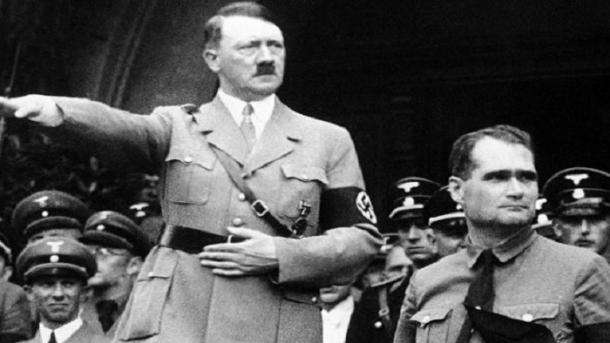
17/OGOS/1988 Presiden Pakistan Ziya Ul Hak meninggal dunia ketika pesawat yang dinaikinya meletup di udara. Ketika Ziya Hak menjawat sebagai ketua staf umum, Zülfikar Ali Bhutto digulingkan dari kekuasaan dengan rampasan kuasa tak berdarah selepas pilihan raya tahun 1977, ketika Pakistan sampai di ambang perang saudara, beliau menjadi Presiden setahun kemudian.
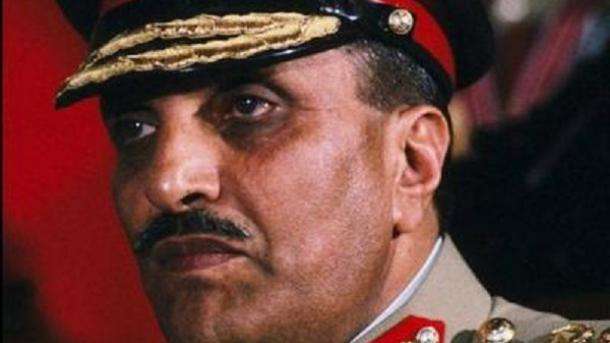
17/OGOS/1999 Turki mengalami salah satu gempa bersejarah terbesar di Wilayah Marmara. Gempa berkekuatan 7.4 berlaku selama 45 saat. 18 ribu 373 orang mati dalam gempa bumi itu, 48 ribu 901 orang cedera, beratus ratus ribu orang kehilangan tempat tinggal. Jumlah rumah dan tempat kerja yang rosak melebihi 245 ribu.

Sumber: https://www.trt.net.tr/melayu/du ... r-asing-271-1474052 |
Rate
-
1
View Rating Log
-
|
|
|
|
|
|
|
|
|
|
|
18/OGOS/1227 Genghis Khan, Maharaja Mongol, yang mendirikan salah satu negeri terbesar dalam sejarah, meninggal dunia. Kubur Genghis Khan, yang sakit semasa ekspedisi tentera pada tahun 1227, masih belum dijumpai.
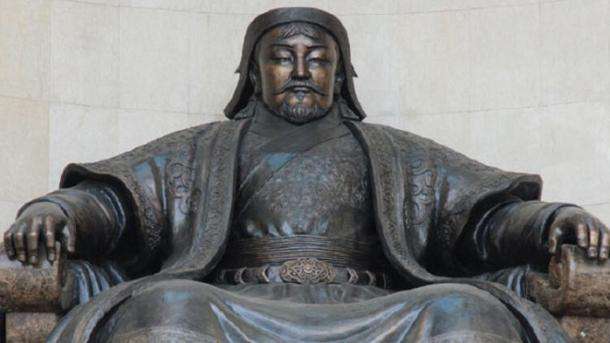
18/OGOS/1850 Penulis Honore de Balzac, yang mencipta karya klasik seperti "Lily of the Valley" dan "Father Goriot", meninggal dunia di Paris pada usia 51 tahun.

18/OGOS/1998 Krisis ekonomi di Rusia menggegarkan dunia. Rusia menghentikan semua pembayaran hutang asing.
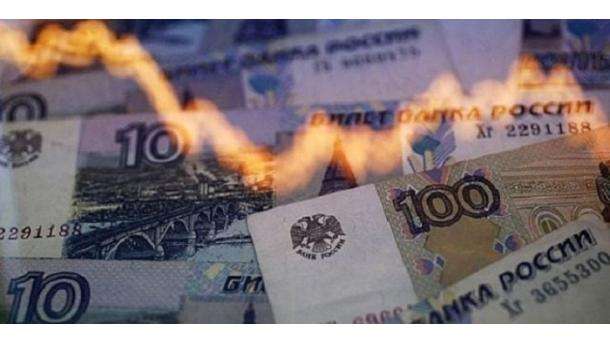
sumber:https://www.trt.net.tr/melayu/du ... rah-18-ogos-1474590
|
Rate
-
1
View Rating Log
-
|
|
|
|
|
|
|
|
|
|
|
20 OGOS 1991 HARI KEMERDEKAAN ESTONIA
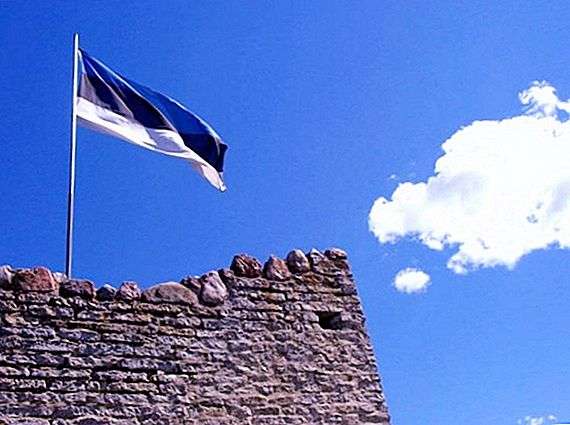
Setiap tahun pada 20 Ogos, Estonians merayakan Hari Kemerdekaan Kemerdekaan. Pada hari ini pada tahun 1991, Majlis Tertinggi SSR Estonian mengadopsi sebuah dekri mengisytiharkan kemerdekaan negara, dan kemudian negeri-negeri lain mengiktirafnya.
Hari Kemerdekaan Estonia dirayakan secara besar-besaran, dengan jumlah perayaan terbesar yang berlaku secara tradisional di Tallinn. Beberapa acara rasmi diadakan, termasuk persidangan antarabangsa, perarakan, upacara di luar gedung parlimen, mesyuarat bekas ahli Majlis Tertinggi, dll. Pada 20 Ogos, adalah kebiasaan untuk mengingati peristiwa bersejarah secara langsung berkaitan dengan pemulihan kemerdekaan negara, membincangkan masa depan Estonia, membuat ucapan yang serius, membawa bunga ke tempat-tempat yang tidak dapat dilupakan. Di samping itu, wakil pihak berkuasa memberi tumpuan kepada bukan sahaja telah diselesaikan, tetapi juga mengenai masalah yang ada, dan bercakap mengenai kemungkinan cara untuk mengatasinya.
Selain acara formal, acara tidak rasmi juga diadakan. Konsert dianjurkan di bandar-bandar Estonia, yang semua boleh dikunjungi. Pada acara sedemikian mereka melakukan muzik arah dan genre yang berbeza. Seringkali konsert juga diadakan di mana anda boleh mendengar lagu tradisi Estonia. Sejak 1998, 20 Ogos adalah hari libur, jadi Estonia mempunyai peluang untuk menghadiri sebarang acara di bandar mereka. Untuk lebih menekankan kepentingan dan kesungguhan percutian, bendera negeri dinaikkan tinggi di atas semua institusi negeri. Estonians lebih suka menghiasi dengan mereka pejabat dan rumah mereka.
Pada Hari Kemerdekaan di Estonia, perhatian khusus dibayar untuk menganjurkan acara untuk kanak-kanak dan remaja. Di bandar-bandar besar, zon kanak-kanak istimewa dibuka, permainan, hiburan dan acara maklumat diadakan. Pada 20 Ogos, pameran bersejarah khas juga dianjurkan untuk kanak-kanak dan remaja, berkat yang Estonians muda boleh belajar lebih banyak tentang negara mereka. Semua aktiviti ini ditujukan kepada pembentukan cinta dan rasa hormat terhadap negara mereka.
|
Rate
-
1
View Rating Log
-
|
|
|
|
|
|
|
|
|
|
|
Hari ini 15 tahun yang lalu, Steve Irwin meninggal dunia akibat ditusuk ekor ikan pari.
Steve Irwin dilahirkan pada 22 Februari 1962 di Victoria, Australia daripada pasangan pemelihara hidupan liar. Pada 1970, ibu bapanya berpindah ke Beerwah, Queensland & membuka Taman Reptilia Beerwah yang kemudian berkembang menjadi Zoo Australia.
Selepas berkahwin pada 1992, Irwin & isterinya Terri merakam dokumentari sambil menjalankan penempatan semula buaya bermasalah sekitar Queensland. Ia menjadi siri dokumentari TV ‘The Crocodile Hunter’ yang melonjakkan namanya di seluruh dunia.
Di samping siri itu yang bersiaran dari 1997-2004, Irwin mengendali & menerbitkan pelbagai lagi dokumentari hidupan liar. Pada 2006, dia & isteri merangka pelan 10 tahun untuk Zoo Australia yang diuruskannya sejak 1991. Namun usianya tak panjang.
September tahun itu, dia & kru berkampung di Batt Reef untuk merakam dokumentari bertajuk ‘Ocean’s Deadliest’. Selepas 8 hari penggambaran, mereka mencari jerung harimau namun cuaca buruk menghalang mereka. Tapi Irwin tidak boleh duduk diam.
Dia & jurukamera menaiki bot & meronda mencari sesuatu untuk dirakam. Tidak lama kemudian, Irwin ternampak seekor pari selebar 8 kaki di air berkedalaman paras dada. Mereka pantas merangka pelan, turun ke air & memulakan penggambaran.
Segalanya berlangsung dengan baik sehinggalah pada ‘shot’ terakhir, pari tersebut tiba-tiba menusuk ekornya ke dada Irwin berkali-kali dalam tempoh beberapa saat. Apabila Irwin dilihat bergelumang dengan darah, dia pantas dibawa naik ke bot.
Krunya cuba memastikan dia terus bernafas dengan CPR, namun sesampainya kepada pasukan medik lebih sejam kemudian, Irwin disahkan meninggal dunia di usia 44 tahun. Tusukan ekor berduri itu tepat ke jantung Irwin, meninggalkan luka tikaman selebar dua inci.
Didapati punca pari yang biasanya tenang itu bertindak sedemikian kerana disangkakan bayang Irwin adalah jerung harimau yang merupakan pemangsanya.
Legasi Irwin cukup besar dalam mendidik dunia tentang kepentingan memelihara hidupan liar. Usahanya diteruskan Terri & 2 orang anak mereka, Bindi & Robert.

|
Rate
-
1
View Rating Log
-
|
|
|
|
|
|
|
|
|
|
|
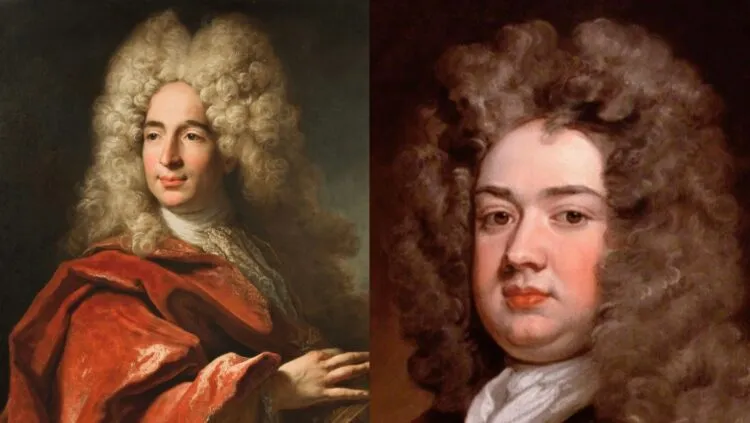
Mengapa Lelaki Eropah Era 1700 Gemar Memakai Rambut Palsu? Ini Sebabnya!
Rambut merupakan aset yang paling penting bagi setiap lelaki. Tidak kira di mana jua mereka berada sama ada di Asia, Eropah, Afrika, Amerika Utara, Amerika Selatan, Antartika mahupun Australia, jika di tanya adakah rambut penting bagi mereka pasti kebanyakannya akan menjawab ‘ya’.
Mari kita lihat mengapa lelaki Eropah pada zaman 1700 sering memakai rambut palsu. Adakah disebabkan trend ketika itu? ataupun disebabkan oleh status atau pangkat ataupun disebabkan masalah lain?
Penjagaan Rambut Palsu Yang Mahal?Pernahkah anda menonton filem ‘Pirates of Carribbean’ atrau melihat gambar potret lama dari tahun 1700. Kebanyakkan lelaki Eropah yang kaya, bangsawan dan budiman ketika itu sering memakai rambut palsu.
Raja Perancis pada tahun 1624 iaitu King Louis XIII mengalami keguguran rambut dan cuba menutup keadaan memalukan itu dengan memakaiu rambut palsu diperbuat dari bulu haiwan seperti kuda. Louis ingin Perancis dilihat sebagai ibu kota fesyen selain Itali. Dia mula menjadikan memakai rambut palsu sebagai status kekayaan dan budiman seorang lelaki pada penghujung tahun 1600an.
Selain dari itu, penularan wabak jangkitan kelamin iaitu Siflis di Eropah pada abad ke-17 hingga ke-18 telah menyebabkan tompokan dan guguran rambut, maka populariti memakai rambut palsu semakin diminati. Kulit berparut akibat dari cacar akan ditutup dengan bedak putih serta lelaki pada zaman itu juga memakai gincu merah.
Rambut palsu yang diopakai mereka juga turut dibedakkan kerana agar tidak menjadi sarang kutu dan ia memerlukan penyelenggaraan yang tinggi. Oleh kerana itu, ia memakan kos yang banyak dan menjadikan pemakaian rambut pastu sebagai status kelas atasan.
Pada tahun 1790 an, rambut palsu telah kehilangan populariti oleh kerana berlakunya revolusi di Perancis. Golongan kelas bawahan telah menganggap orang yang memakai rambut palsu ini sebagai orang kaya serta orang yang tidak akan memandang kepada orang miskin. Willian Pitt The Younger , merupakan ahli parlimen yang memberi akta “Hair Powder Act of 1795” telah menamatkan popularitu rambut palsu kerana untuk membeli bedak penjagaan rambut tersebut haruslah berasal dari keluarga diraja atau pendeta agama.
|
Rate
-
1
View Rating Log
-
|
|
|
|
|
|
|
|
|
|
|
First View of Earth From Moon
On Aug. 23, 1966, the world received its first view of Earth taken by a spacecraft from the vicinity of the Moon. The photo was transmitted to Earth by the Lunar Orbiter I and received at the NASA tracking station at Robledo De Chavela near Madrid, Spain. The image was taken during the spacecraft's 16th orbit.
Image credit: NASA |
This post contains more resources
You have to Login for download or view attachment(s). No Account? Register
x
Rate
-
1
View Rating Log
-
|
|
|
|
|
|
|
|
|
| |
|